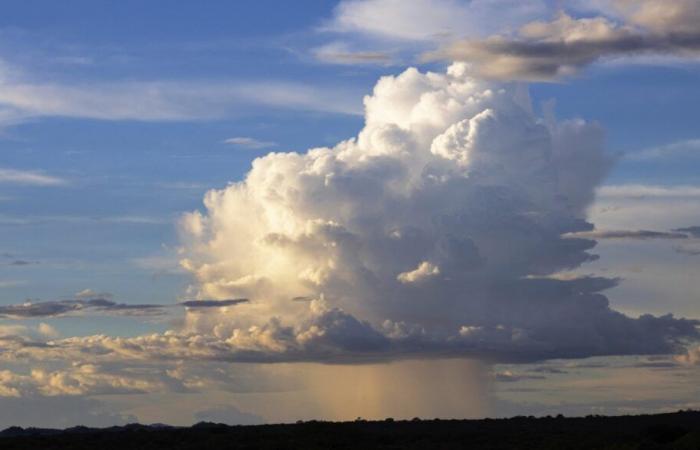Clouds play a crucial role in the climate dynamics of the atmosphere, but their effects are a source of many uncertainties in models. These gray areas are nevertheless becoming better and better understood. For example, a new mechanism contributing to their formation has just been identified by Jiaoshi Zhang, of Washington University in Saint-Louis, and his colleagues.
The birth of clouds is as much about physics as it is about chemistry. In the troposphere, the atmospheric layer closest to the ground and which rises to about 15 kilometers above sea level, water vapor condenses to form droplets. These become, depending on different meteorological parameters (temperature, humidity, atmospheric pressure), stratocumulus, cumulonimbus, or cirrus clouds.
But to condense, vapor needs the presence of airborne particles to attach to. Until now, for climatologists, the formation of new particles above the clouds, in the upper troposphere, resulted from so-called “convective” processes: aerosols (fine particles) emitted from the earth's surface rose and grew. through complex chemical reactions.
However, Jiaoshi Zhang and his colleagues have identified another mechanism for the formation of these particles. Thanks to observational data gleaned during two missions carried out by NASA in 2016 and 2017 in the northern regions of the Pacific Ocean and the Atlantic Ocean, they demonstrated a chemical process for creating particles taking place at the level of the tropopause. The latter marks the boundary between the troposphere, rich in water vapor, and the stratosphere, above, whose dry air is loaded with ozone (O3), with the famous ozone layer which protects us from the sun's ultraviolet radiation. When a stratospheric air mass, loaded with ozone, crosses this boundary and descends into the troposphere, an oxidation reaction leads to the formation of new particles.
Researchers have shown that, as it descends into the troposphere, stratospheric air loaded with ozone reacts with water vapor, promoting the production of a dominant oxidant in the atmosphere: the hydroxyl radical (OH). High hydroxyl concentrations, near the tropopause, are found in an environment rich in sulfur dioxide (SO2). But the association of SO2 and OH leads to the production of sulfuric acid, known to trigger the formation of new sulfur particles.
The team also found that this meteorological phenomenon occurred more frequently when the day's sunshine was at its maximum, its intensity being greater during the summer. This observation is a clue that reinforces the proposed scenario, because solar radiation is known to promote the production of hydroxyl radicals. Furthermore, the formation of particles by intrusions of stratospheric air has been observed in large geographical areas, particularly in marine areas, at low and high latitudes.
This new mechanism of particle formation at the origin of clouds will be essential to improve climate models. It is all the more crucial as the high concentrations of sulfur dioxide in the troposphere result, among other things, from air traffic and megafires. “In pre-industrial times, SO emissions2 were weaker, specifies Slimane Bekki, researcher at the Atmospheres and Space Observations Laboratory at the Pierre-Simon-Laplace Institute. Nowadays, SO emissions2 are essentially anthropogenic. They can influence the formation of cirrus clouds, and therefore, the climate. It will be necessary to correctly integrate this mechanism into climate models to take into account the effects of these anthropogenic emissions. »
Download the PDF version of this article
(reserved for digital subscribers)






